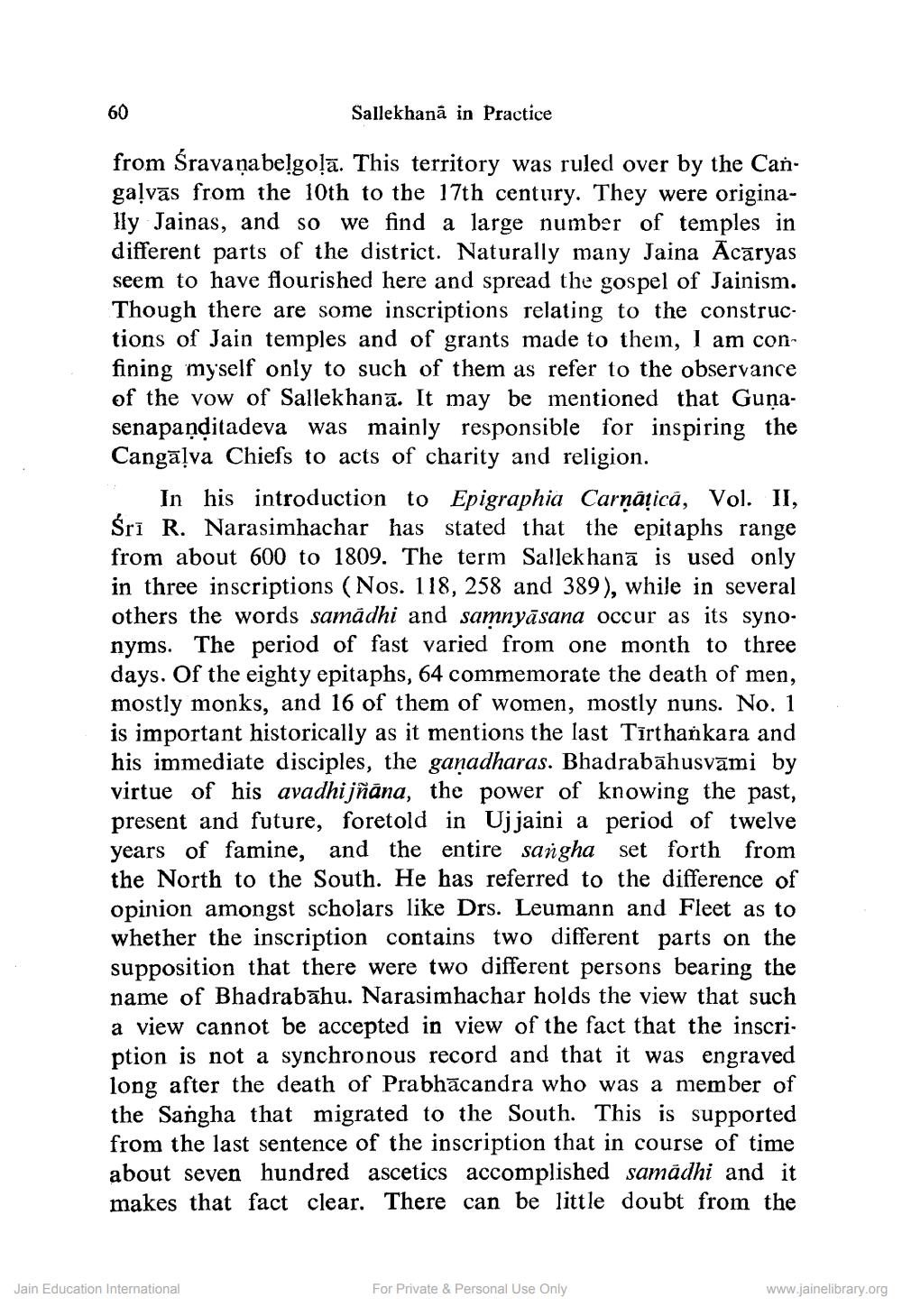________________
60
Sallekhana in Practice
from Sravanabelgoļā. This territory was ruled over by the Cangalvas from the 10th to the 17th century. They were originaHly Jainas, and so we find a large number of temples in different parts of the district. Naturally many Jaina Acāryas seem to have flourished here and spread the gospel of Jainism. Though there are some inscriptions relating to the constructions of Jain temples and of grants made to them, I am confining myself only to such of them as refer to the observance of the vow of Sallekhanā. It may be mentioned that Guņasenapanditadeva was mainly responsible for inspiring the Cangā!va Chiefs to acts of charity and religion.
In his introduction to Epigraphia Carnāțică, Vol. II, Śrī R. Narasimhachar has stated that the epitaphs range from about 600 to 1809. The term Sallek hanā is used only in three inscriptions (Nos. 118, 258 and 389), while in several others the words samadhi and samnyāsana occur as its synonyms. The period of fast varied from one month to three days. Of the eighty epitaphs, 64 commemorate the death of men, mostly monks, and 16 of them of women, mostly nuns. No. 1 is important historically as it mentions the last Tīrthankara and his immediate disciples, the ganadharas. Bhadrabāhusvāmi by virtue of his avadhijñāna, the power of knowing the past, present and future, foretold in Ujjaini a period of twelve years of famine, and the entire sangha set forth from the North to the South. He has referred to the difference of opinion amongst scholars like Drs. Leumann and Fleet as to whether the inscription contains two different parts on the supposition that there were two different persons bearing the name of Bhadrabāhu. Narasimhachar holds the view that such a view cannot be accepted in view of the fact that the inscription is not a synchronous record and that it was engraved long after the death of Prabhācandra who was a member of the Sangha that migrated to the South. This is supported from the last sentence of the inscription that in course of time about seven hundred ascetics accomplished samadhi and it makes that fact clear. There can be little doubt from the
Jain Education International
For Private & Personal Use Only
www.jainelibrary.org




